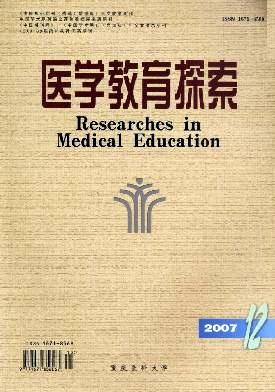Application research of self-rating scale of self-directed learning in nursing training
引用次数: 0
Abstract
Objective To analyze the reform of improving the teaching effects of nursing college students' practical training. Methods Cluster sampling method was used to select 396 nursing college students in a higher nursing school as the research objects, with 197 in experimental group and 199 in control group. Self-directed learning was adopted in practical teaching of surgical nursing in the students in experimental group, and traditional surgery teaching was adopted in control group. Self-rating scale of self-directed learning (SRSSDL) was used every 3 months during the period. The students' self-directed learning ability was measured dynamically, and the scores of practical examination and course satisfaction were compared between the two groups. The data were statistically analyzed by repeated measures analysis of variance and independent sample t-test using SPSS 17.0. Results The scores of repeated measurement of SRSSDL in the experimental group were higher than those in the control group (F=16.237, P=0.016). Except for the common surgical instruments module (P=0.056), the scores of practical training examination in the experimental group were higher than those in the control group, and the differences were statistically significant (P<0.01 for the operating room nursing module, P=0.005 for the wound nursing module, P<0.01 for the enterostomy nursing module). The students' satisfaction with the overall curriculum in the experimental group was higher than that in the control group. Conclusion Self-directed learning in the teaching of nursing practice can effectively enhance comprehensive ability and quality of students based on self-directed learning ability, and improve the teaching effect of practical training courses. Key words: Self-rating scale of self-directed learning; Nursing training; Educational reform自主学习自评量表在护理培训中的应用研究
目的分析提高护生实践训练教学效果的改革措施。方法采用整群抽样方法,选取某护理学院396名护生为研究对象,其中实验组197名,对照组199名。实验组采用自主学习法进行外科护理实践教学,对照组采用传统外科教学。在此期间,每3个月使用一次自我指导学习自评量表(SRSSDL)。动态测量学生的自主学习能力,并比较两组学生的实践考试成绩和课程满意度。数据采用SPSS 17.0,采用重复测量方差分析和独立样本t检验进行统计学分析。结果实验组SRSSDL重复测量得分高于对照组(F=16.237,P=0.016),除普通外科器械模块(P=0.056)外,实验组实训考核得分均高于对照组,差异有统计学意义(手术室护理模块P<0.01,伤口护理模块P=0.005,肠造口术护理模块P<0.01)。实验组学生对整体课程的满意度高于对照组。结论护理实践教学中的自主学习能有效地提高学生在自主学习基础上的综合能力和素质,提高实践培训课程的教学效果。关键词:自主学习自评量表;护理培训;教育改革
本文章由计算机程序翻译,如有差异,请以英文原文为准。
求助全文
约1分钟内获得全文
求助全文

 求助内容:
求助内容: 应助结果提醒方式:
应助结果提醒方式:


